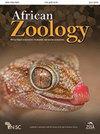移位模型不能用于预测生物多样性对全球变化的响应:以非洲象为例
IF 0.5
4区 生物学
Q4 ZOOLOGY
引用次数: 1
摘要
人类活动影响了动物的行为、分布和种群结构,预计这种影响将在未来增加。因此,相当多的努力集中在了解和预测这种未来变化以应对人为压力,以便更好地保护和恢复种群和物种。然而,有一种风险是科学家和实践者没有认识到过去人类对生物多样性影响的程度,并且没有使用他们所熟悉的情况作为基线和衡量来评估当前或未来的生物多样性变化。这种无法识别过去变化的现象被称为基线转移综合征(Pauly 1995)。我们建议,当描述生态位特征(如分布、栖息地利用、饮食资源或行为)的模型(描述性、定量或概念性)是利用一个系统(群落、物种或种群)中收集的数据开发的,这些数据已经经历了基线的转移,这样的模型应该被称为“转移模型”。在这里,我们定义了这种转移模型,并展示了相关的缺点,重点关注最近发表的一项关于非洲象Loxodonta africana的研究中转移环境生态位模型的具体例子(Dejene et al. 2021)。本文章由计算机程序翻译,如有差异,请以英文原文为准。
Shifted Models Cannot be Used for Predicting Responses of Biodiversity to Global Change: The African Elephant as an Example
Human activities have affected animals’ behaviour, distribution and population structure and this effect is predicted to increase in the future. Considerable effort is therefore being focussed on understanding and predicting such future changes in response to anthropogenic pressures, this to better conserve and restore populations and species. However, there is a risk that scientists and practitioners fail to recognise the extent of past human effects on biodiversity and use the situation they are familiar with as a baseline and a measure against which to assess current or future biodiversity changes. This failure to recognise past changes is known as the shifting baseline syndrome (Pauly 1995). We propose that when models (descriptive, quantitative or conceptual) describing niche features, such as distribution, habitat use, dietary resources or behaviour, are developed using data collected in a system (communities, species or populations) that has already undergone shifted baselines, such models should be referred to as ‘shifted models’. Here we define such shifted models and demonstrate associated shortcomings, focusing on the particular example of shifted environmental niche models in a recently published study on African elephants Loxodonta africana (Dejene et al. 2021).
求助全文
通过发布文献求助,成功后即可免费获取论文全文。
去求助
来源期刊

African Zoology
生物-动物学
CiteScore
2.60
自引率
9.10%
发文量
18
审稿时长
>12 weeks
期刊介绍:
African Zoology , a peer-reviewed research journal, publishes original scientific contributions and critical reviews that focus principally on African fauna in terrestrial, freshwater, and marine ecosystems. Research from other regions that advances practical and theoretical aspects of zoology will be considered. Rigorous question-driven research in all aspects of zoology will take precedence over descriptive research. The Journal publishes full-length papers, critical reviews, short communications, letters to the editors as well as book reviews. Contributions based on purely observational, descriptive or anecdotal data will not be considered.
The Journal is produced by NISC in association with the Zoological Society of South Africa (ZSSA). Acceptance of papers is the responsibility of the Editors-in-Chief in consultation with the Editors and members of the Editorial Advisory Board. All views expressed are those of the author and not necessarily those of the Editors or the Department.
 求助内容:
求助内容: 应助结果提醒方式:
应助结果提醒方式:


